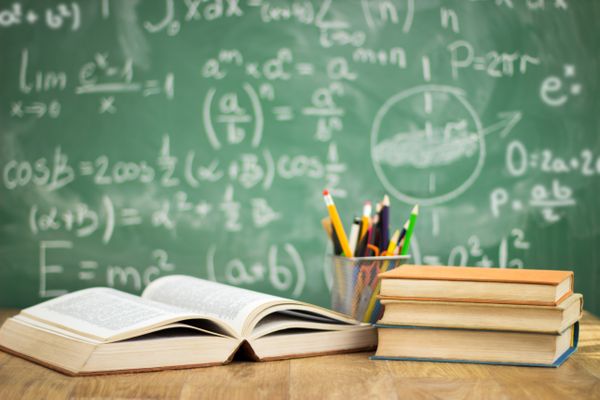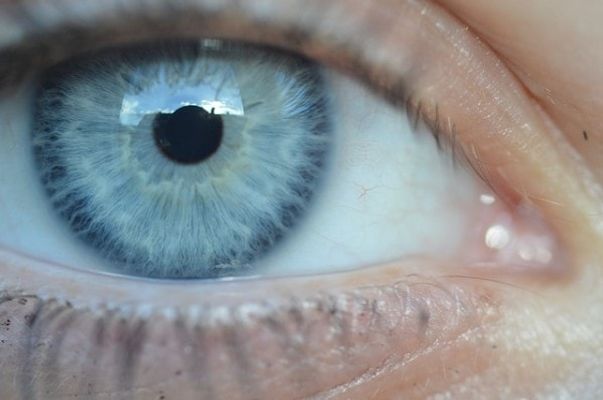1.6.14
Cultural Issues
Positive Cultural Impacts
Positive Cultural Impacts
Technology has positively impacted several areas of society. For example:


Health
Health
- Technology can improve health through:
- Computerised imaging.
- Modelling diseases.
- Artificial intelligence.


Education
Education
- Online learning platforms provide access to courses at some of the world's best universities for free.


Welfare
Welfare
- Applying for benefits and other government services online saves time.
- This also saves the government money that can be spent on improving other services.


Work-life-balance
Work-life-balance
- Mobile devices give employees the freedom to work from anywhere, at any time.
Negative Cultural Impacts
Negative Cultural Impacts
Technology has negatively impacted several areas of society. For example:


Health
Health
- Overuse of technology can lead to issues such as:
- Repetitive strain injury (RSI).
- Eye strain.
- Neck and back problems.
- Lack of exercise.


Education
Education
- Technology is expensive, and poorer schools (especially abroad) cannot afford devices.
- This contributes to the digital divide.


Work-life-balance
Work-life-balance
- Feeling like work never finishes can result in an intrusion on family time, resulting in poorer relationships and less rest.
- A poor work-life-balance can have a significant impact on the wellbeing of employees and their families.


Fake news
Fake news
- The main news source for young adults is social media.
- Fake news stories can spread very quickly on these websites.
1Computer Systems
1.1Systems Architecture
1.1.1Elements of Computer Systems
1.1.2Types of Computer Systems
1.1.3Von Neumann Architecture
1.1.4Registers of the Central Processing Unit (CPU)
1.1.5Fetch-Execute Cycle
1.1.6Factors Affecting CPU Performance
1.1.7Exam-Style Questions - Von Neumann Architecture
1.1.8Diagnostic Misconceptions - Embedded vs General
1.2Memory & Storage
1.2.1Types of Memory
1.2.2Flash Memory
1.2.3Properties of Flash Memory
1.2.4Running Out of Memory
1.2.5Virtual Memory
1.2.6Exam-Style Questions - Primary Memory
1.2.7Units of Capacity
1.2.8Calculating Capacity Requirements
1.2.9Solid State Storage
1.2.10Properties of Solid State Media
1.2.11Magnetic Storage
1.2.12Properties of Magnetic Media
1.2.13Examples of Magnetic Storage
1.2.14Optical Storage
1.2.15Properties of Optical Media
1.2.16Examples of Optical Storage
1.2.17Types of Optical Disk
1.2.18End of Topic Test - Computer Systems
1.2.19Grade 9 - Storage
1.2.20Exam-Style Questions - Storage
1.2.21Number Bases
1.2.22Converting Number Bases
1.2.23Converting Denary & Hexadecimal
1.2.24Hexadecimal
1.2.25Using Hexadecimal
1.2.26Binary Addition
1.2.27Binary Shifts
1.2.28Representing Text
1.2.29ASCII & Unicode
1.2.30Representing Images
1.2.31Converting Binary & Images
1.2.32Representing Sound
1.2.33Data Compression
1.2.34End of Topic Test - Representation
1.2.35Exam-Style Questions - Data Conversions
1.2.36Diagnostic Misconceptions - RAM vs ROM
1.2.37Diagnostic Misconceptions - Bits, Nibbles & Bytes
1.2.38Diagnostic Misconceptions - Bits Required to Store
1.3Computer Networks, Connections & Protocols
1.3.1Benefit of Networks
1.3.2Types of Networks
1.3.3Network Performance
1.3.4Networks: How Do Packets Get Routed?
1.3.5Client-Server Model
1.3.6Pros & Cons of Client-Server Model
1.3.7Peer-to-Peer Model
1.3.8Pros & Cons of Peer-to-Peer Model
1.3.9Network Hardware
1.3.10Transmission Media
1.3.11What is the Internet?
1.3.12URLs
1.3.13DNS & Web Hosting
1.3.14The Cloud
1.3.15Pros & Cons of the Cloud
1.3.16Exam-Style Questions - Networking Models
1.3.17Star & Mesh Network Topologies
1.3.18WiFi
1.3.19WiFi Frequency & Channels
1.3.20WiFi Encryption
1.3.21IP Addresses
1.3.22MAC Addresses
1.3.23Network Protocols
1.3.24Transmission Protocols
1.3.25Application Protocols
1.3.26Layers
1.3.27Advantages of Layering
1.3.28Exam-Style Questions - Network Protocols
1.3.29Diagnostic Misconceptions - LAN vs WAN
1.4Network Security
1.4.1Forms of Attack
1.4.2Penetration Testing
1.4.3Malware
1.4.4How Malware Spreads
1.4.5Social Engineering
1.4.6Phishing
1.4.7Cracking Passwords
1.4.8Denial of Service Attacks
1.4.9Data Interception
1.4.10Methods of Data Interception
1.4.11SQL Injection
1.4.12Network Administration
1.4.13Network Forensics
1.4.14Protecting Against Malware
1.4.15Firewalls
1.4.16User Access Levels
1.4.17Passwords
1.4.18Encryption
1.4.19End of Topic Test - Networks
1.5Systems Software
1.6Ethical, Legal, Cultural & Environmental Concern
1.6.1Open Source Software
1.6.2Proprietary Software
1.6.3Licensing Issues
1.6.4Ethical Issues - The Digital Divide
1.6.5Ethical Issues - Net Neutrality
1.6.6Ethical Issues - Working Conditions
1.6.7Ethical Issues - Censorship
1.6.8Exam-Style Questions - Ethical Issues
1.6.9Data Protection Act 1998
1.6.10Computer Misuse Act (1990)
1.6.11Copyright Designs & Patents Act (1988)
1.6.12Creative Commons Licensing
1.6.13Freedom of Information Act (2000)
1.6.14Cultural Issues
1.6.15Environmental Issues
1.6.16Positive Environmental Impact
1.6.17Online Activity Tracking
1.6.18The Internet of Things
1.6.19Stakeholders
1.6.20End of Topic Test - Software & Issues
1.6.21Diagnostic Misconceptions - Open Source
2Computational Thinking, Algorithms & Programming
2.1Algorithms
2.1.1Computational Thinking - Abstraction
2.1.2Computational Thinking - Decomposition
2.1.3Algorithmic Thinking
2.1.4Pseudocode
2.1.5Flow Diagrams
2.1.6Interpreting Algorithms
2.1.7Correcting Algorithms
2.1.8Completing Algorithms
2.1.9Search Algorithms
2.1.10Binary Search
2.1.11Linear Search
2.1.12Overview of Sort Algorithms
2.1.13Bubble Sort
2.1.14Merge Sort
2.1.15Insertion Sort
2.1.16Exam-Style Questions - Sorting Algorithms
2.2Programming Fundamentals
2.2.1Variable Declaration & Assignment
2.2.2Input & Output
2.2.3Program Flow - Sequence
2.2.4Program Flow - Selection
2.2.5Program Flow - Iteration
2.2.6Arithmetic Operators
2.2.7Relational Operators
2.2.8Boolean Operators
2.2.9Data Types
2.2.10Casting
2.2.11Arrays
2.2.12Strings
2.2.13File Handling
2.2.14Structuring Data - Records
2.2.15Structured Query Language
2.2.16Random Number Generation
2.2.17End of Topic Test - Programming
2.2.18Exam-Style Questions - Translation
2.2.19Diagnostic Misconceptions - Comparison Operators
2.2.20Diagnostic Misconceptions - = & ==
2.2.21Diagnostic Misconceptions - Types of Data
2.2.22Diagnostic Misconceptions - Last Line of Code
2.2.23Diagnostic Misconceptions - Array Index
2.3Producing Robust Programs
2.4Boolean Logic
Jump to other topics
1Computer Systems
1.1Systems Architecture
1.1.1Elements of Computer Systems
1.1.2Types of Computer Systems
1.1.3Von Neumann Architecture
1.1.4Registers of the Central Processing Unit (CPU)
1.1.5Fetch-Execute Cycle
1.1.6Factors Affecting CPU Performance
1.1.7Exam-Style Questions - Von Neumann Architecture
1.1.8Diagnostic Misconceptions - Embedded vs General
1.2Memory & Storage
1.2.1Types of Memory
1.2.2Flash Memory
1.2.3Properties of Flash Memory
1.2.4Running Out of Memory
1.2.5Virtual Memory
1.2.6Exam-Style Questions - Primary Memory
1.2.7Units of Capacity
1.2.8Calculating Capacity Requirements
1.2.9Solid State Storage
1.2.10Properties of Solid State Media
1.2.11Magnetic Storage
1.2.12Properties of Magnetic Media
1.2.13Examples of Magnetic Storage
1.2.14Optical Storage
1.2.15Properties of Optical Media
1.2.16Examples of Optical Storage
1.2.17Types of Optical Disk
1.2.18End of Topic Test - Computer Systems
1.2.19Grade 9 - Storage
1.2.20Exam-Style Questions - Storage
1.2.21Number Bases
1.2.22Converting Number Bases
1.2.23Converting Denary & Hexadecimal
1.2.24Hexadecimal
1.2.25Using Hexadecimal
1.2.26Binary Addition
1.2.27Binary Shifts
1.2.28Representing Text
1.2.29ASCII & Unicode
1.2.30Representing Images
1.2.31Converting Binary & Images
1.2.32Representing Sound
1.2.33Data Compression
1.2.34End of Topic Test - Representation
1.2.35Exam-Style Questions - Data Conversions
1.2.36Diagnostic Misconceptions - RAM vs ROM
1.2.37Diagnostic Misconceptions - Bits, Nibbles & Bytes
1.2.38Diagnostic Misconceptions - Bits Required to Store
1.3Computer Networks, Connections & Protocols
1.3.1Benefit of Networks
1.3.2Types of Networks
1.3.3Network Performance
1.3.4Networks: How Do Packets Get Routed?
1.3.5Client-Server Model
1.3.6Pros & Cons of Client-Server Model
1.3.7Peer-to-Peer Model
1.3.8Pros & Cons of Peer-to-Peer Model
1.3.9Network Hardware
1.3.10Transmission Media
1.3.11What is the Internet?
1.3.12URLs
1.3.13DNS & Web Hosting
1.3.14The Cloud
1.3.15Pros & Cons of the Cloud
1.3.16Exam-Style Questions - Networking Models
1.3.17Star & Mesh Network Topologies
1.3.18WiFi
1.3.19WiFi Frequency & Channels
1.3.20WiFi Encryption
1.3.21IP Addresses
1.3.22MAC Addresses
1.3.23Network Protocols
1.3.24Transmission Protocols
1.3.25Application Protocols
1.3.26Layers
1.3.27Advantages of Layering
1.3.28Exam-Style Questions - Network Protocols
1.3.29Diagnostic Misconceptions - LAN vs WAN
1.4Network Security
1.4.1Forms of Attack
1.4.2Penetration Testing
1.4.3Malware
1.4.4How Malware Spreads
1.4.5Social Engineering
1.4.6Phishing
1.4.7Cracking Passwords
1.4.8Denial of Service Attacks
1.4.9Data Interception
1.4.10Methods of Data Interception
1.4.11SQL Injection
1.4.12Network Administration
1.4.13Network Forensics
1.4.14Protecting Against Malware
1.4.15Firewalls
1.4.16User Access Levels
1.4.17Passwords
1.4.18Encryption
1.4.19End of Topic Test - Networks
1.5Systems Software
1.6Ethical, Legal, Cultural & Environmental Concern
1.6.1Open Source Software
1.6.2Proprietary Software
1.6.3Licensing Issues
1.6.4Ethical Issues - The Digital Divide
1.6.5Ethical Issues - Net Neutrality
1.6.6Ethical Issues - Working Conditions
1.6.7Ethical Issues - Censorship
1.6.8Exam-Style Questions - Ethical Issues
1.6.9Data Protection Act 1998
1.6.10Computer Misuse Act (1990)
1.6.11Copyright Designs & Patents Act (1988)
1.6.12Creative Commons Licensing
1.6.13Freedom of Information Act (2000)
1.6.14Cultural Issues
1.6.15Environmental Issues
1.6.16Positive Environmental Impact
1.6.17Online Activity Tracking
1.6.18The Internet of Things
1.6.19Stakeholders
1.6.20End of Topic Test - Software & Issues
1.6.21Diagnostic Misconceptions - Open Source
2Computational Thinking, Algorithms & Programming
2.1Algorithms
2.1.1Computational Thinking - Abstraction
2.1.2Computational Thinking - Decomposition
2.1.3Algorithmic Thinking
2.1.4Pseudocode
2.1.5Flow Diagrams
2.1.6Interpreting Algorithms
2.1.7Correcting Algorithms
2.1.8Completing Algorithms
2.1.9Search Algorithms
2.1.10Binary Search
2.1.11Linear Search
2.1.12Overview of Sort Algorithms
2.1.13Bubble Sort
2.1.14Merge Sort
2.1.15Insertion Sort
2.1.16Exam-Style Questions - Sorting Algorithms
2.2Programming Fundamentals
2.2.1Variable Declaration & Assignment
2.2.2Input & Output
2.2.3Program Flow - Sequence
2.2.4Program Flow - Selection
2.2.5Program Flow - Iteration
2.2.6Arithmetic Operators
2.2.7Relational Operators
2.2.8Boolean Operators
2.2.9Data Types
2.2.10Casting
2.2.11Arrays
2.2.12Strings
2.2.13File Handling
2.2.14Structuring Data - Records
2.2.15Structured Query Language
2.2.16Random Number Generation
2.2.17End of Topic Test - Programming
2.2.18Exam-Style Questions - Translation
2.2.19Diagnostic Misconceptions - Comparison Operators
2.2.20Diagnostic Misconceptions - = & ==
2.2.21Diagnostic Misconceptions - Types of Data
2.2.22Diagnostic Misconceptions - Last Line of Code
2.2.23Diagnostic Misconceptions - Array Index
2.3Producing Robust Programs
2.4Boolean Logic
Unlock your full potential with Seneca Premium
Unlimited access to 10,000+ open-ended exam questions
Mini-mock exams based on your study history
Unlock 800+ premium courses & e-books

